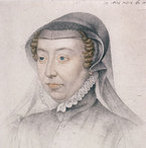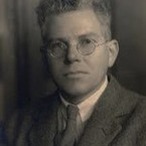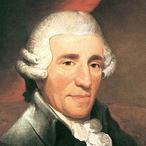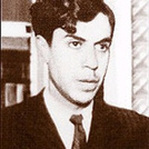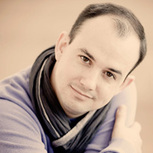|
The Théâtre des Champs-Élysées played host to a wonderful concert performance of Handel’s Rodelinda, with a stellar cast which included soprano Karina Gauvin, and the contraltos Sonia Prina and Delphine Galou. Alan Curtis was at the helm, directing the orchestra, Il Complesso Barocco. From the moment Karina Gauvin sang her first note, she stamped her authority on the character of Rodelinda. Her potent attack in the aria “L’empio rigor” was ferocious indeed, yet she was capable of great tenderness also, as her light touch and exquisite phrasing in “Ombra piante” confirmed. Her technical skill and confident coloratura was evident in the demanding “Morrai, sì”, while Gauvin raged with the force of a Medea in the recitative where Rodelinda exhorts Grimoaldo to kill her son. In the following aria, “Spietati, lo vi giurai” Gauvin was on fire. The purity and solidity of tone in the high tessitura of “Ritorna, o caro” was beautiful to behold, while her “Se’l mio duol”, with its nods to “Se pietà” from Giulio Cesare, was utterly heartrending. Gauvin’s “Mio cara bene”, was truly joyous as she soared above the stave. Gauvin was indeed a memorable and powerful Rodelinda. 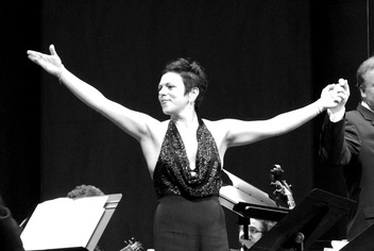 Sonia Prina, contralto Sonia Prina, contralto In a role which is so full of powerful arias, it was surprising to note that Sonia Prina’s Bertarido produced some of the tenderest performances I have ever heard from her. In the poignant “Dove sei”, Prina’s middle register was so light and pure it was almost as if we were listening to a lyric mezzo, instead of a contralto famed for revelling in her chest register, while “Con rauco mormorio” was devastatingly affecting. Prina returned to her fiery form with “Confusa sì miri” thundering through her lines with tremendous security in the lower register, while she effortlessly navigated the awkward lines of “Scacciata dal suo nido” which sit right across the contralto lower passagio. Prina’s vocal fireworks in “Se fiera belva ha cinto” threatened to upstage her astounding “Vivi Tiranno”, both of which saw her dive ferociously into the true contralto depths. The duet “Io t’abbraccio” was truly magical, as Prina and Gauvin’s voices wove together to form a richly textured, intimate musical pattern: where Gauvin glided to the top of the stave, Prina countered by flowing to the bottom, achieving a synthesis of tone in the overlapping areas. The velvety tones of mezzo Romina Basso and contralto Delphine Galou were heard in the roles of Eduige and Unulfo respectively. Basso’s rich middle register added a sultry sensuality to the traitorous Eduige. She excelled in the feisty “Lo farò dirò spietato”, her warm tone present throughout the range. “De’ miei scherni” saw Basso unleash her trademark speed, and her wonderful ornamentation. She also excels in dynamic variations, which she uses to great effect on long, unaccompanied notes in her cadenze. Her last aria was the vivacious “Quanto più fiera”, in which she seemed to enjoy herself a lot. Galou’s speed and lightness of touch, coupled with her dark timbre, make her voice perfect for the so-called “trouser” roles. She sped through her first aria, “Sono i culpi”, at breakneck speed, navigating confidently the low-lying coloratura. In “''Fra tempeste funeste” Galou sang one of the most beautiful lines in the opera, the phrase “foreira la calma già spunta una stella”, which was enriched by her exquisite mezza di voce on each of the tied notes. Topi Lehtipuu’s Grimoaldo was a little off kilter after a mishap in the first aria, but he recovered to produce a lovely “Prigioniera hò l’alma”. While some of the arias seemed a little low for his beautiful, high and light lyric Tenor (which is superb for Vivaldi, in which he has proven success), his “Trà sospetti” was fabulous, with Lehtipuu dominating the aria. Matthew Brook gloried in his role as the scheming villain Garibaldo. “Di Cupido” was both menacing and entertaining, with Brook taking the high tessitura and difficult series of arpeggios in his stride. Particularly good was the extended phrase on the word “alletta”. For me, though, one of the highlights of the night was Brook’s maniacal “Tirannia”, sung with true evil triumph, and one of the best I have heard. Alan Curtis and Il Complesso Barocco did a great job, and thanks for the encore of the final ensemble, with Matthew Brook reduced to an “ornamental” role as his character was already dead by this point. It was a fantastic evening, and a lovely end to my Parisian holiday.
0 Comments
The Château de Versailles in France is currently hosting a festival titled "The Triumph of Handel". I spent four days there to experience some of the performances for myself, and to let you all know about the wonderful work they are doing to promote this excellent Baroque composer. The first performance I attended was a concert version of the opera Alcina. Alcina is an opera full of exciting music and powerful characterisation, charting the emotional and psychological breakdown of a once all-powerful sorceress, as she loses her control of her lover, her island, and ultimately her magical powers. As such, it is one of Handel’s most engaging works. For more information about the opera, please see my previous review of Alcina from a performance at the Barbican in 2010. The title role was taken by soprano Karina Gauvin. Her rich, generous voice, coupled with her strong, vibrant chest register, made her an exciting Alcina. Encompassing the full range of human emotion, the role of Alcina is one which requires complete submersion into the character by the artist. This is not easy to do in a normal production, let alone a concert performance, where the full drama of a staged performance is lacking. Gauvin was more than able to wring every last drop of feeling from her arias, and from the recitatives where she interacted with the other characters. From her first aria, the love-struck “Di, cor mio,” to her final, calamitous cry of “O noi perdute!” Gauvin’s characterisation was sincere and intense. Her lightness of voice in “Si, son quella” was mesmerising, with some very touching pauses on the exposed notes above the stave, such as in the phrase “se amar tu non me vuoi”. Ophélie Gallard’s accompaniment on the ‘cello was beautiful, wonderfully played and very moving. “Ah! Mio cor” was truly chilling, with Christophe Rousset’s direction bringing out the stabbing rhythm mercilessly in the A section. Gauvin brought out the conflicting emotions of the “wronged” woman in the A section and the ruthless witch-queen in the B section with vivid intensity. The long lines of coloratura in “Ombra pallide” were dispatched easily by Gauvin, taking the ebb and flow of the lines with security and well-conceived dynamics. Her excellent breath-control and phrasing helped build the tension of this dark aria, which showed the witch-queen at her most unstable and insecure. “Ma quando tornerai” was all bluster and vengeance in the A section, while the B section was so needy and desperate that one could hardly believe that once all powerful sorceress had ever existed. Her heart-breaking final aria, “Mi restanto le lagrime,” brought a sincere round of applause from us in the audience. Ann Hallenberg’s Ruggiero was a revelation. Her playful lyricism was evident in the touching “La bocca vaga,” while her beauty of tone and intuitive phrasing made the simple yet gorgeous “Mi lusinga” all the more elegant. Hallenberg’s most moving aria was “Verdi prati.” I can honestly say I have never heard a better version. The warmth of Hallenberg’s voice, coupled with her fantastic use of dynamics, made this a pleasure to listen to. It takes a very good singer to make an aria this straightforward rhythmically, and with respect to range, stand out and hold its own compared to the more dynamic arias in the opera. Hallenberg is such a singer. The big aria for Hallenberg, and of the opera, is “Sta nell'ircana.” Written for the star castrato Carestini, it is one of the most challenging arias in all of Handel’s operas. Ranging from B3 to G5, running across the three registers, and with many parts lying low in the middle register, it is often an aria which can cause registration problems, resulting in vocal barking or cracking, or a loss of breath control as a consequence of pushing too hard in the lower middle register to create volume. This was not a problem for Hallenberg, her flawless technique giving her the ability to negotiate the difficult passages with apparent ease. Her ornamentation in the da capo was stunning, resulting in a rapturous applause from us in the audience. The show was stolen, for me, by the ferocious singing of contralto Delphine Galou, in the role of Bradamante. Galou has a beautiful, silky dark tone, which she uses to tremendous effect in slower arias, and a fabulous coloratura capability which invigorates faster ones. She received a huge round of applause for her dazzling rendition of “E’ gelosia,” her first aria of the evening. The fury with which she delivered her phrases, and the speed and agility showed on the coloratura lines, brought the aria to life magnificently. Galou’s characterisation was excellently done, continuing even while sitting on her chair, reacting in character to the other performers. But the best was yet to come. The killer aria in the role of Bradamante is “Vorrei vendicarmi.” Handel wrote the aria for the great contralto Maria Caterina Negri (1), who sang in no less than 11 of Handel’s operas. As the orchestra started to play, Galou set her shoulders, took a deep breath, and launched in to the most vigorous and dynamic performance of this aria I have ever heard. The high-octane coloratura and the vehemence of the delivery combined to blow our socks off. In the da capo, Galou set off with a reckless abandon, running well below the stave at points. Praise should also go to Gautier Blondel, the sole Contrabassist, who managed to power out the rumbling bass line superbly. Galou’s final aria, “All’ alma fedel” was full of smooth legato singing – a pleasure to listen to. Monica Piccinini's high, light soprano was well cast for the role of Morgana, Alcina's sister. In her major aria, "Tornami a vagheggiar," she floated above the stave easily, each staccato note lightly touched like a bell. I think there was also a D6 thrown in for good measure! The long held notes in "Ama, sospira" were solid and easily negotiated. Emiliano Gonzalez Toro has the light, sweet tenor which makes the role of Oronte such a pleasure to listen to. His lyricism was evident throughout the concert, and he produce a wonderful rendition of "Un momento di contento," which won him heart-felt applause. Olivier Lallouette was a solid Melisso, dispatching "Pensa a chi geme d'amor piagata" very convincingly. Erika Escribá-Astaburuaga was excellent in the role of Oberto, the only shame being that "Barbara; io ben lo sò" was cut short. I would definitely like to her more of her in the future. Les Talens Lyriques, under the baton of Christophe Rousset, produced a performance which shone. Their cohesion as a group, and their vibrant delivery, gave the opera a vitality which it can sometimes lack with a less dynamic orchestra and conductor. The high standard of the performers and the stunning location made this, for me, one of the most memorable performances I have attended. (1) Negri was famous for refusing to honour a one of her contracts, resisting even as grenadiers barricaded her home and threatened arrest!
In this Olympic year, it is perhaps appropriate that we should be presented with a few performances of possibly one of the most popular librettos of all time: Pietro Metastastio’s L’Olimpiade. More than 60 baroque and classical composers used the libretto as the text for their own operatic and instrumental creations, including Antonio Vivaldi. Last night, instead of the more famous Vivaldi opera, we were presented with a "pasticcio" of the works of 16 composers: Leo, Hasse, Galuppi, Sarti, Mysliveček, Paisiello, Pérez, Vivaldi, Gassmann, Caldara, Traetta, Jommelli, Cherubini, Pergolesi, Piccinni, Jommelli and Cimarosa. The pasticcio is the brainchild of Joseph Fifer, manager of the Venice Baroque Orchestra (VBO) – the players at last night’s performance. In 2001, the VBO performed the modern day premiere of Cimarosa’s L’Olimpiade, followed in 2006 by the premiere of Galuppi’s version. It was “during research for the Galuppi staging,” Fifer says, that he became “aware that dozens of composers had set the same story.” This led to discussions between Fifer and director of the VBO, Andrea Marcon, “about creating a pasticcio performance and recording project.” After searching the archives of Milan, Florence, Naples, Venice, Paris, Lisbon, Berlin, New York, and Washington DC, and online music resources, the final tapestry of arias by 16 composers was woven together. The result was a CD, released on the Naïve recording label (also responsible for the groundbreaking Vivaldi Edition project), and a series of concerts in Europe, starting in London. A preview of some of the arias on the recording can be seen in the video below. The role of Megacle was taken by mezzo-soprano Romina Basso. We were treated to Basso’s excellent coloratura work in the first aria, Hasse’s “Superbo di me stesso.” Particularly nice was her dark tone on the low, descending phrase “come mi sta nel cor,” and her truly Olympian ornamentation in the da capo. The orchestra was a little loud, however, and slightly obscured her chest register in this aria. Not so in the fiery second act aria “L’amico dov’è?” by Cherubini, which Basso stormed through with passion, excellent diction and consummate phrasing. Her inspired modulation of the dynamics wound up the tension, earning her an extended applause. Her final aria, “Lo seguitai felice,” was a Basso tour-de-force, with exciting coloratura, fluid movement throughout the range, and breathtaking beauty of tone. Two of the three arias for contralto Delphine Galou – taking the role of Licida – were composed by Baldassare Galuppi. His version of the opera premiered in Milan, and was regarded as his most successful opera seria. The first aria, “Quel destrier, che all’albergo è vicino,” showed off Galou’s rich, velvety timbre sound, while in her last aria, “Gemo in un punto, e fremo,” her forceful delivery and intuitive delivery of the text was striking: and what a strong low Ab at the end of the B section! The most astounding performance, however, was her beautifully tender, stripped-down version of Vivaldi’s “Mentre dormi” – a haunting and definitive rendition. I look forward to hearing her interpretation of the role of Bradamante in Handel’s Alcina at Versailles next month. I was looking forward to hearing the aria by Josef Mysliveček “Del destin non vi lagnate,” performed be tenor Jeremy Ovenden. What I was not prepared for, however, was the ringing F#4 (G in Baroque pitch) at the start of the piece. In fact, I would say that Ovenden was the surprise of the evening. His pianissimo notes in the head register on the phrase “ma regnate”were delightful, and his phrasing and tone throughout the aria marked him as a rising star. Well done to him also for continuing un-phased as part of the ceiling fell down! He handled the difficult “So ch’è fanciullo Amore” by Jommelli expertly, and excelled in the final aria of the opera, “Non so donde viene” by Cimarosa, with its nearly two octave ascending leap. Luanda Siqueira took on the role of Argene, originally performed by Karina Gauvin on the Naïve recording. She was composed throughout, and performed well, particularly in Pergolesi’s fiendish “No, la speranza,” displaying a solid and flexible range over two octaves. "Oh care selve, oh cara" by Sarti had some beautifully lyric moments, with Siqueria providing some very tasteful ornamentation. Her coloratura during Traetta's "Che non mi disse un dì!" was precice, though it was freer and more playful in her final aria, Perez's "Fiamma ignota nell’alma mi scende." The love interest of both Licida and Megacle, the Princess Aristea, was sung by Ruth Rosique, who threw herself into her character with determination, reaping exciting results, particularly in the fierce offering from Leonardo Leo, “Tu me da me divide”. Her duet with Romina Basso, “Nei giorni tuoi felici,” was convincing, with Rosique and Basso interacting well. Caldara's "Grandi, e ver, son le tue pene" is vocally taxing, but Rosique managed to make it her own. Paisello's "Tu di saper procura" and Piccinni's "Caro, son tua cosi" allowed Rosique to showcase the softer side of her voice to great effect.
The role of Aminta was taken by counter-tenor Nicholas Spanos, who also doubled up as a bass in the choruses: the final two of which, both by Hasse, were superb. Bassoonist Stefano Meloni deserves special mention for his virtuosic playing during Spanos' first aria, “Siam navi all’onde algenti,” which was a furious tempest of an aria. Markellos Chryssicos at the Harpsichord was also worthy of note. Chryssicos had previously taken the role of conductor on the CD recording. It was an enjoyable evening, particularly for those wishing to look deeper into the world of those Baroque composers. Indeed, Joseph Fifer stated objectives were: “to help introduce important work by several lesser-known composers, and to encourage others to continue exploring the enormous body of eighteenth-century Italian opera.” This production shows that these objectives have been met, admirably. Infanticide, petrification, magic, sex, giant disco balls, and evil spirits that go "gloop" in the night: The Royal Opera's production of "Niobe, Regina di Tebe" is both a visual and an audio sensation. It was brave of Covent Garden to put on this particular opera, given it was an unknown baroque work by one of the lesser know composers of the period. It was well worth the risk though, as there were very few empty seats at the final performance. In fact, a few of the patrons I spoke to were repeat attendees.
So what is it about this obscure work that made such an impact? And why was it important for the ROH to stage such a production during an economic downturn? To answer the first question, it is important to understand the work and its themes, the music, and the production. Niobe was the seventh opera penned by Baroque composer Agostino Steffani. Well known in his time as both a composer and a diplomat, Steffani's operas have since been forgotten: until now, that is. The Cast and Character list was as follows: Jacek Laszczkowski: Anfione, King of Thebes, husband of Niobe Veronique Gens: Niobe, Queen of Thebes, wife of Anfione Tim Mead: Clearte, Courtier to Anfione and Niobe, is in love with Niobe Delphine Galou: Nerea, Nurse to Niobe, doesn't love anyone, and thinks that most people are cheating so-and-so's Alastair Miles: Poliferno, Evil Sorcerer, Brother of the previous Queen of Thebes, usurped by Anfione (best character in the opera!) Bruno Taddia: Tiresa, High Priest of Latona, tells Niobe off a lot, and gets beeten to a pulp by her, spends a lot of time rolling about on the floor Amanda Forsythe: Manto, Tiresa's daughter, boring annoying character, in love with Tiberno Lothar Odinius: Tiberno, Son of the King of Alba, another boring character, in love with Manto Giant Disco Ball: Coolest thing in the Opera The opera focuses on the King and Queen of Thebes. The King, Anfione, wants to retire from public life in order to meditate on higher matters. To facilitate this, he abdicates in favour of his wife, the beautiful Niobe. She quite enjoys this idea, and to help her, Anfione recalls his courtier, Clearte, from his self-imposed exile in the forests. The reason for Clearte's rather dramatic isolation is that he is madly in love with Niobe. During Anfione's self-imposed seclusion, Clearte and Niobe come to tell him that Creonte, Prince of Thessaly, has raised an army to invade Thebes. Creonte is actually being helped by Poliferno, evil sorcerer and brother of the former Queen of Thebes who, along with her husband, was murdered by Anfione. As the army approaches, Anfione sings a prayer to Jove, and at the sound of his voice, the walls of Thebes magically rise up, in defence of the city. This prompts Niobe to declare her husband a God. Niobe's declaration incurs the wrath of the goddess Latona (Leto), expressed through her Priest, Tiresa. Tiresa's insistence on giving thanks to Latona causes Niobe to beat and kick him. Not content with this, she encourages her children to do the same. Poliferno uses his diabolical magic to conjure evil spirits to drag Anfione away, while casting a glamour over Niobe, making her think that Creonte (the Prince of Thessaly, not Clearte, her courtier: confusing, isn't it) is in fact the god Mars. She has a little x-rated fun with him before fainting. Meanwhile Tiresa, Priest of Latona, informs Anfione of Poliferno's schemes, and of Niobe's inconstancy. Suitably angry, Niobe declares war on the heaven, stating that she alone is descended from the gods. She destroys the altars of Latona and her children, Apollo and Diana. Filled with pride, Niobe calls for her ASBO children to be brought to her to witness her destructive act, and to revel in her deification. The gods, by now rather annoyed, decide to show everyone who's boss by causing fire, earthquakes, lightning, and other such terrors to reign down upon Thebes. In the ensuing chaos, all of Niobe's children are killed. Anfione sees his little ones burnt to a cinder, and stabs himself. Niobe, realising that both her husband and children are all dead, turns to stone in despair. Creonte (Prince of Thessaly) becomes king of Thebes, and banishes Poliferno for his trickery (a tad harsh I thought considering all the help he gave him) and general alarums and trumpets sound. There is also a sub-plot involving two very annoying characters (Manto and Tiberno) having an on-off love affair. It does get a little tedious, mainly because the primary plot has so much going on. Confusing, no? Well, it didn't really matter, as the themes dealt with were juicy enough. It was interesting to see how the production dealt with the psychological and supernatural elements of the opera. Possibly the best thing I've ever seen in opera is the use of a giant disco ball to represent the deification of Anfione. As it stood suspended mid stage, it began to spin, causing thousands of little disco ball lights to whiz around the audience. As Anfione ascended to the heavens, the disco ball went with him, while Jacek Laszczkowski, who played Anfione, unleashed a true Soprano note which received a well earned cheer. I think most of the applause was for the disco ball though... Poliferno's evil powers were represented by a giant black gloop-monster, made up of four people in stretchy material, accompanied by a gloop sound played out around the auditorium. the gloop-monster shuffled back and forth across the stage according to Poliferno's will, and spewed him and Creonte out of its nether regions whenever Poliferno was transporting them via occult means. I did spend a lot of the opera wishing that it would eat Manto and Tiberno, but unfortunately I was unsatisfied on this point. During the scenes where Niobe was deceived by Poliferno into thinking that Creonte was the god Mars, all three characters were dressed in gold, representing the heavens. The set was very dark, so only the protagonists were visible, along with the giant black balloons, filled with helium, which bobbed around the stage while Niobe sang. The use of black balloons showed that it was Poliferno's magic at play (gloop-monster babies came to mind), and when Poliferno and Creonte fled after their plot had been discovered, the balloons burst, leaving Niobe to face a rather rude awakening. Along with this, there was real fire on stage, trumpeters playing from the third floor balcony, and an AWOL Creonte trying to climb out of one of the boxes and into the stalls. Oh, and did I mention the giant disco ball? Anyway, enough about the effects, lets get on to the singing! Male Soprano Jacek Laszczkowski was expressive and committed to the role of Anfione, husband of Niobe. He managed to convey the progress from king to recluse to saviour to godhood to despair convincingly and with pathos. Vocally, however, there were a few problems. In the lower register the voice cracked when trying to emote strongly on consonants which involve the closing of the lips (b, d, m etc.) and when he slipped into the modal voice at the very bottom of the range the join between the falsetto and modal voices had not been properly smoothed over. Also, in the middle register, the voice had a heavily aspirated sound which after a while sounded as if Laszczkowski was tiring. The overall performance was excellent though, and the high soprano notes were forceful, melodic and crystal clear. It was a wonderful experience to hear the role sung by a man, giving us an idea of what the composer originally intended. My favourite aria for Anfione was the beautiful "Sfere amiche, or date al labro". Scored with unusual richness, Anfione's aria is a prayer for peace in the Palace of Harmony, as he attempts to cast off worldly cares, after having abdicated in favour of his wife, Niobe. In fact, during the aria, it was as if a spell had been cast over the audience. It's slow 6/4 time signature made for a lilting, hypnotic pace, and the continuous descending phrases shared successively by the viole and the violins added to the enchantment. Laszczkowski's voice in this aria completed the bewitchment: impossibly long-held pianissimo phrases, coupled with beguiling acting, both vocal and physical, drew the audience into the spell. It is unsurprising that "Sfere amiche" got the first spontaneous applause of the night. When the aria was over, it was akin to an awakening, a return to normal space. It reminded me of hearing Cecilia Bartoli at the Barbican singing "Sposa, non mi conosci", which produced the same effect. Two other notable arias were "Tra bellici carmi" from Act II, and "Spira gia nel propiro sangue" in Act 3."Tra bellici carmi" is a coloratura rage aria, proclaiming vengeance against Creonte (Iestyn Davies) for seducing, with Poliferno's help, his wife Niobe. Laszczkowski successfully navigates the virtuoso passages with ease, some of which seemed to last forever. This aria, more than any other sung by him, highlighted for me the possible sound of the castrati. The second aria, "Spira gia nel propiro sangue", is Anfione's death aria. Set in the obscure key of F minor, which Steffani "associated with extreme emotions and events", it is a poignant piece, sung at the moment that Anfione stabs himself, after discovering that his children have all been killed by the goddess Latona (Leto). Full of pathos, Laszczkowski's interpretation captured the audience, leaving us all with an understanding of the King's despair. Unlike most opera death arias, Anfione actually expires before completing it. If there was one criticism of the interpretation, it would be that the staccato "sobs" Laszczkowski produces sound more like an old lady cooing a child than a distressed and dying man, but it is a minor quibble. The title role of Niobe was sung by Veronique Gens, aSoprano with great experience of the Baroque repertoire. With her seduction of Clearte (Tim Mead), her courtier and besotted aficionado, and her impassioned battering of Tiresia, Priest of the goddess Latona (Bruno Taddia), Gens' characterisation was less tragic heroine and more Joan Collins. While it was not an authentic characterisation of the Queen from Ovid's Metamorphoses, the work on which the opera was based, it made for an entertaining production. Her final aria, accompanied by continuo, "Funeste immagini", was very powerful, and like Anfione's last aria, is left unfinished as she turns to stone. The long recitative before her final aria is a little wearisome, but that was more to do with the composition than with Gens' characterisation. The relish with which she expressed each successive emotion made Gens' portrayal very enjoyable. Of the remaining characters, my two favourites were Nerea, nurse to Niobe's children (Delphie Galou), and Poliferno (Alastair Miles). Nerea is a comic character, mostly ranting on about the inconstancy of men, and the inability of women to resist anything male with a strong pair of thighs. She does try and get Clearte to tell Niobe how much he loves her, and takes pleasure in watching him squirm, as did most of the audience. But, for all her efforts, she too ends up being kicked about by Niobe. My favourite character of the evening though was the evil magician Poliferno. The only character to have all his arias accompanied by continuo and orchestra, Poliferno definitely makes you sit up and take notice. His excellent aria, "Evil spirits, shake the skies" was a masterclass in how to perform a Baroque Bass Rage Aria. Impossibly fast, frighteningly accurate, and demonically malevolent, Alastair Miles showcased an aria which should, now it has been rediscovered, become a staple of any baroque bass. He even got his own instrument to announce his recitatives: the otherworldly sounding Regal. At the first sounds of the instrument (played by Michael Behringer, who also played the Harpsichord and Organ in the production) practically everybody in the audience tried to see the instrument. So why was it so important for ROH to stage this particular production? Wouldn't another topless Don Giovanni or busty Carmen have been better value? Well, no, I don't think so. Not that I have anything against topless Don's or Busty Gypsies, but we don't get to see, or hear, music like this very much. Yes, of course, we hear Baroque opera on the stage and in the concert hall, but this early Baroque music is not so well known. I think quite a few people in the audience were hearing it for the first time, and were very impressed. To have the period instruments, and a singer that was able to perform the role as the composer originally intended (Laszczkowski), added a depth which enabled the audience to understand the times in which the opera was written. The excellent staging provided added visual stimulation, providing interest during the slower parts of the opera. If theatres like ROH are unwilling to produce shows like this, then music by people like Steffani will either stay lost and forgotten, or be staged in dry concert performances without the spectacle with which they were originally conceived. Well done ROH for this production, and I hope you continue to push back the boundaries in the future. |
Categories
All
Archives
September 2014
|
MOST VIEWED POSTS
© James Edward Hughes 2013
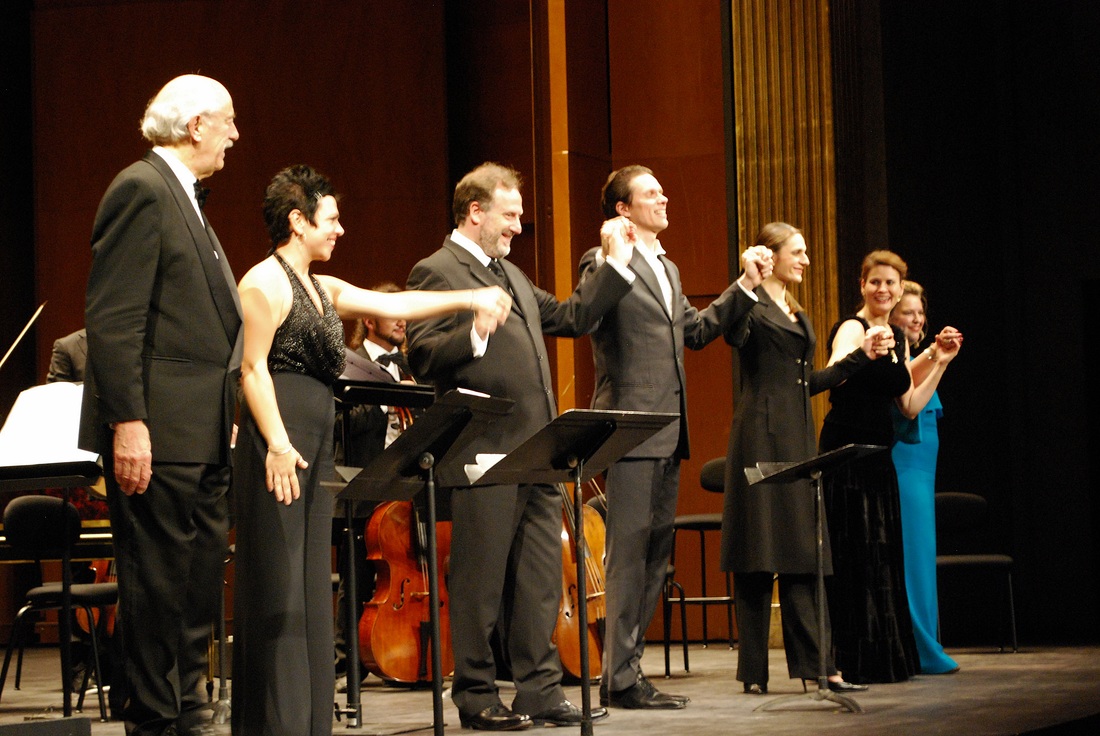
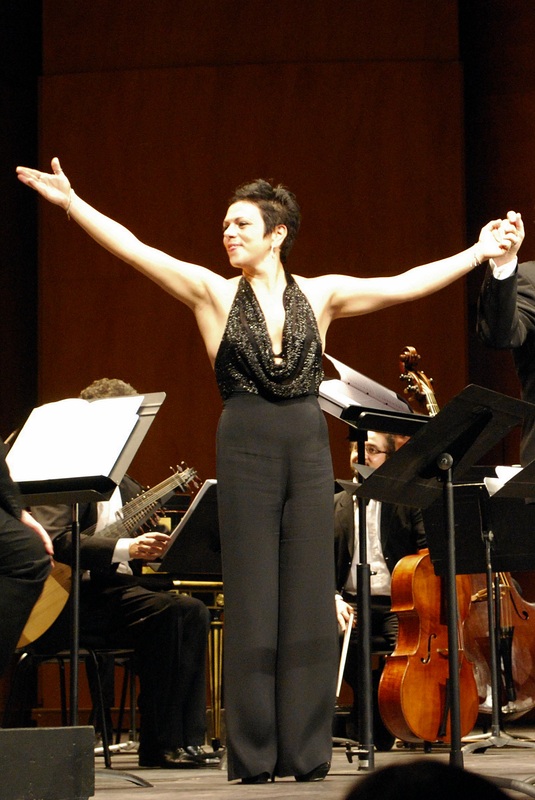
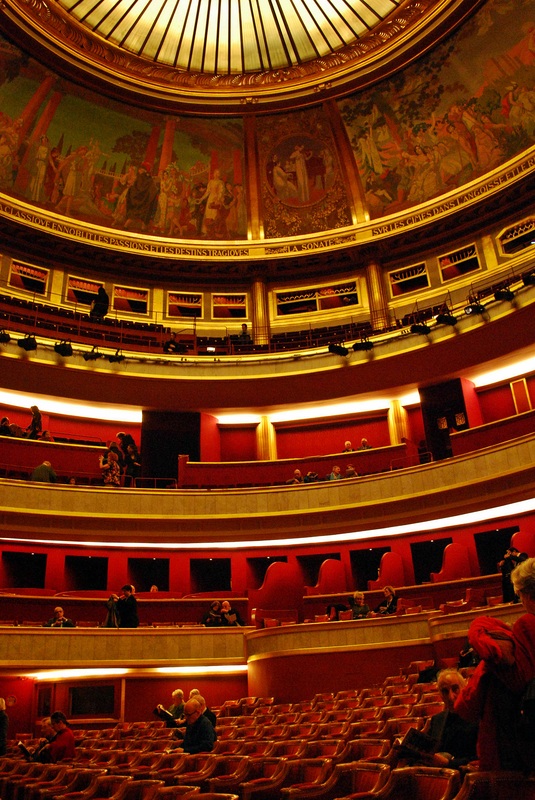
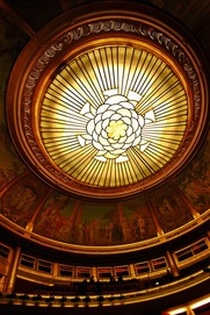
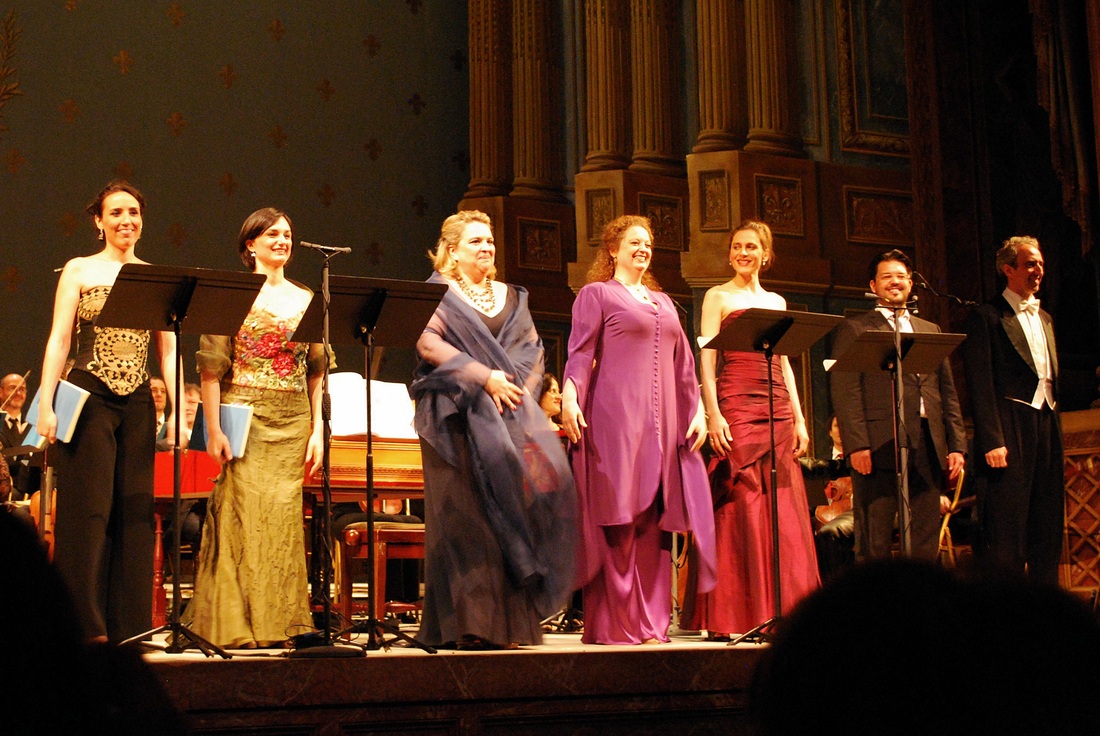
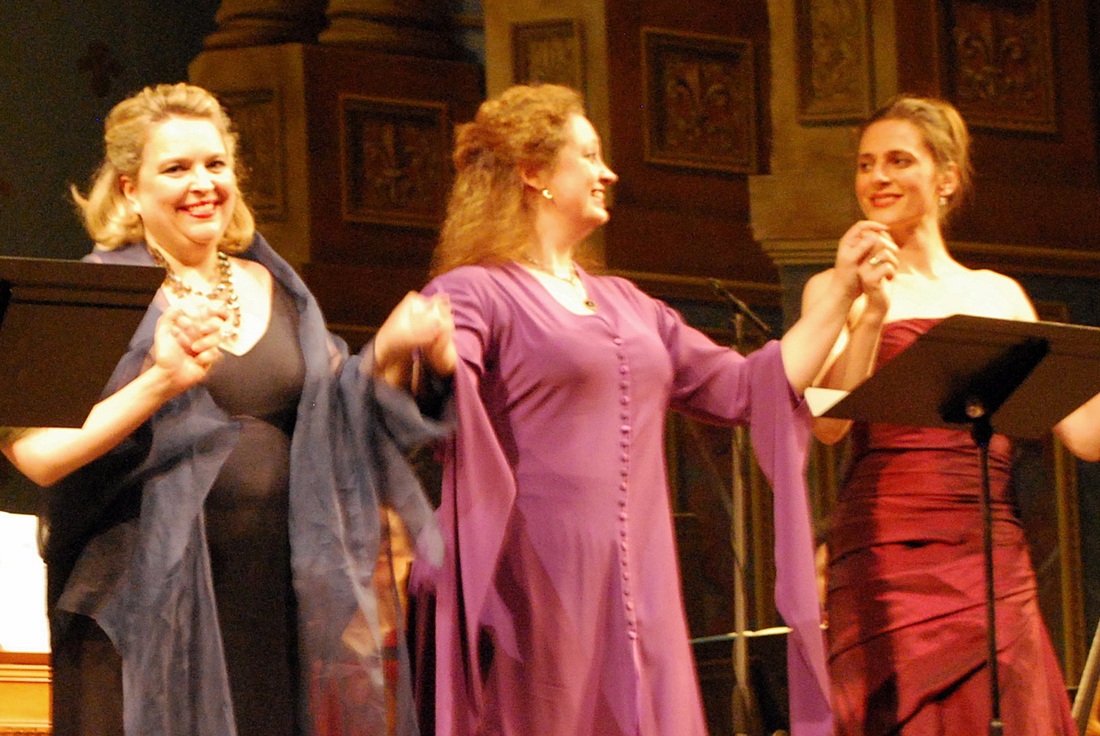
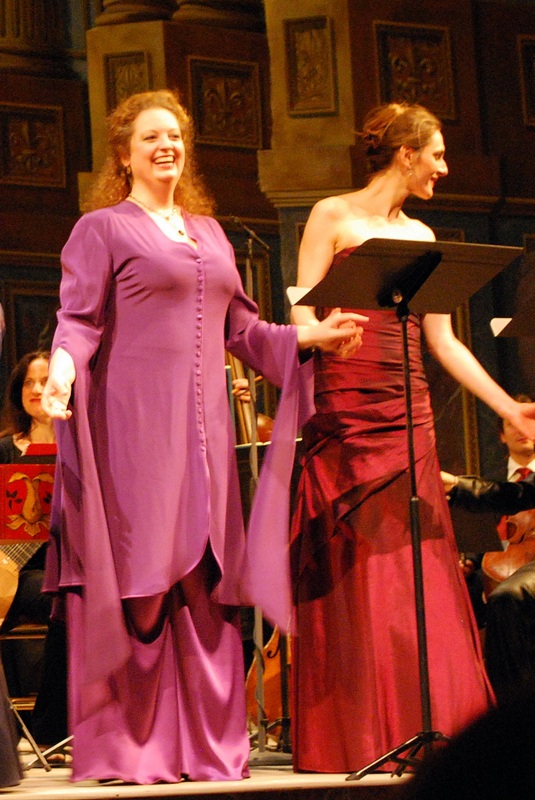
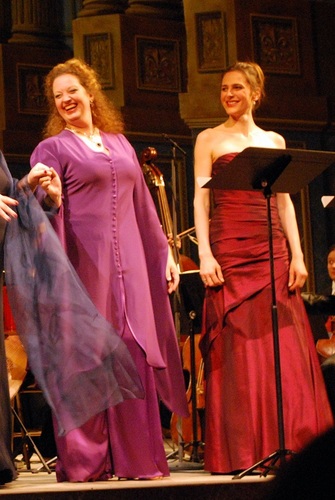
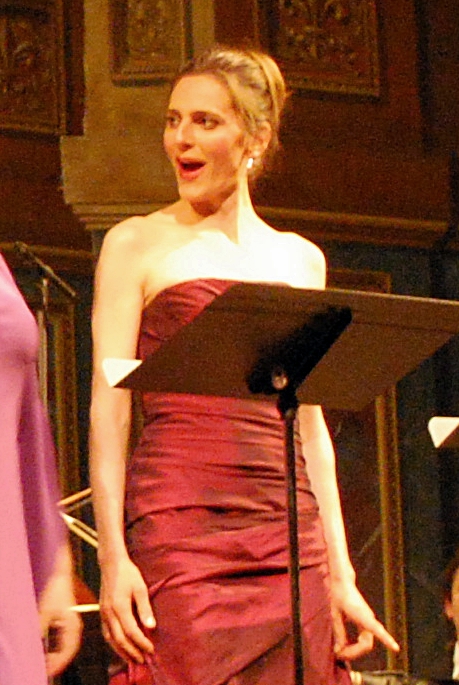
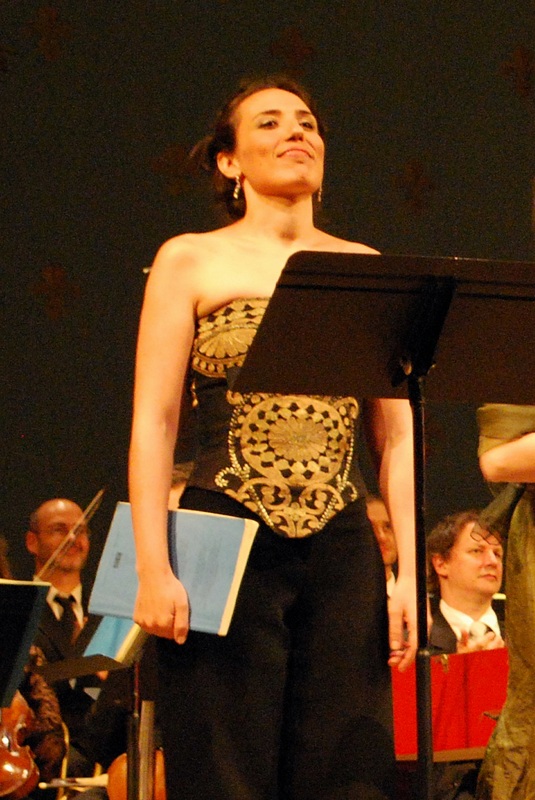
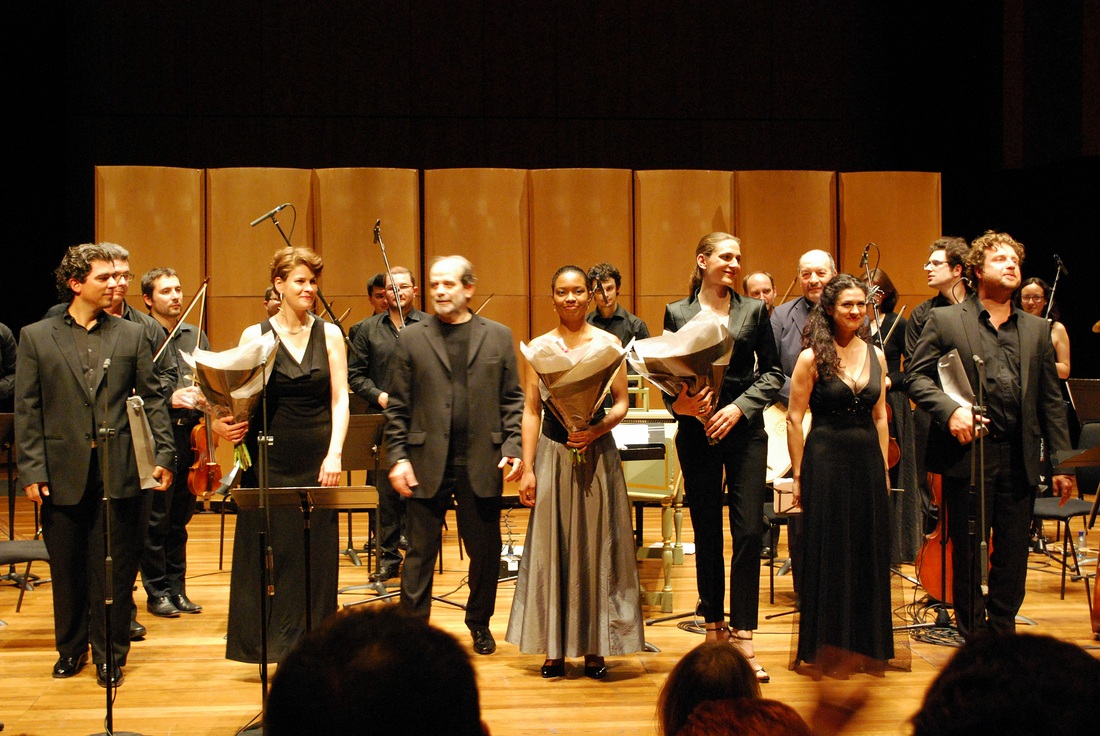
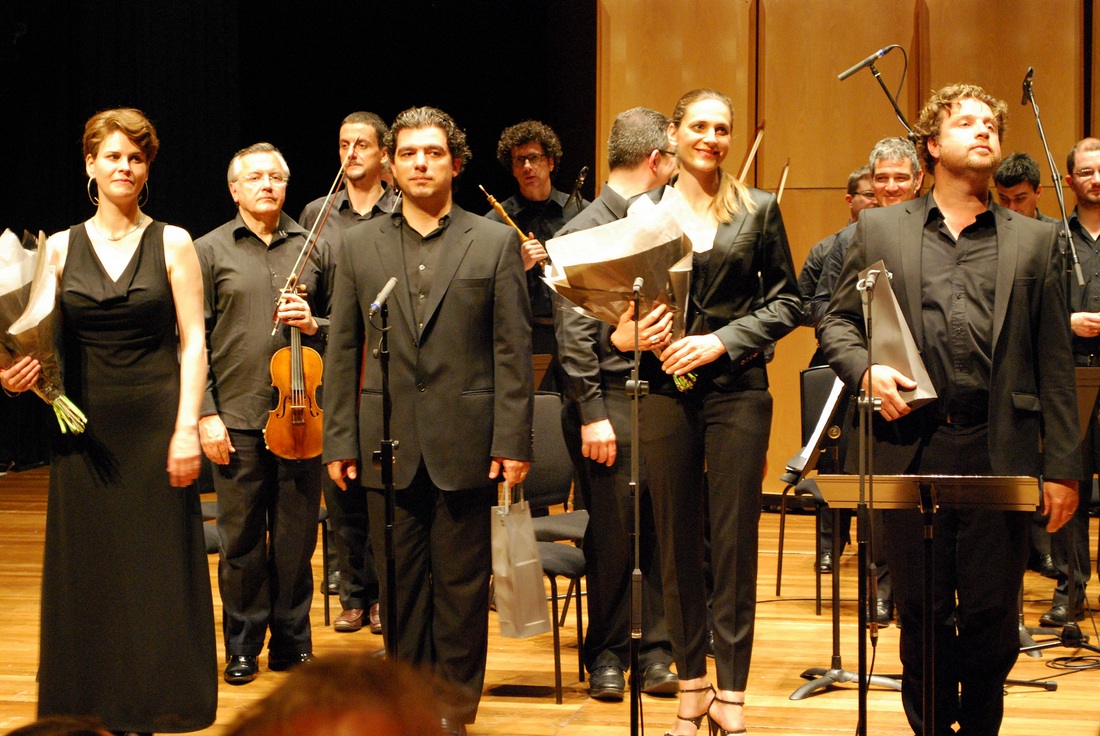
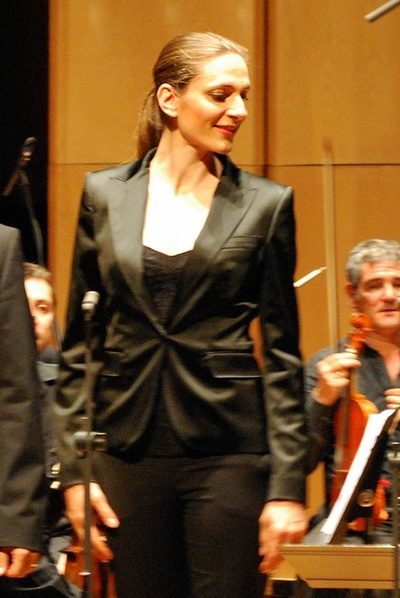
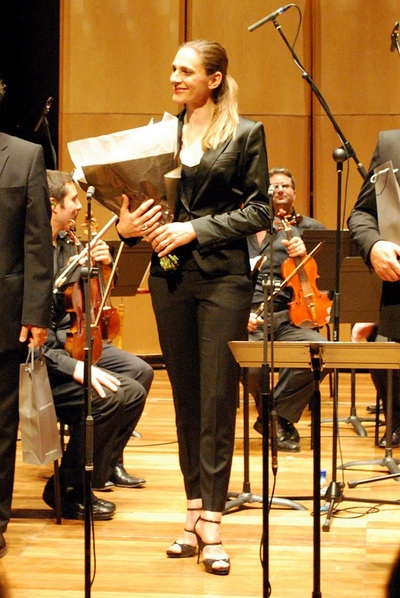
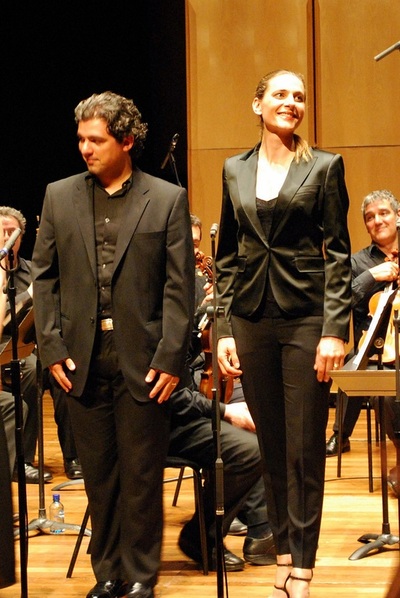
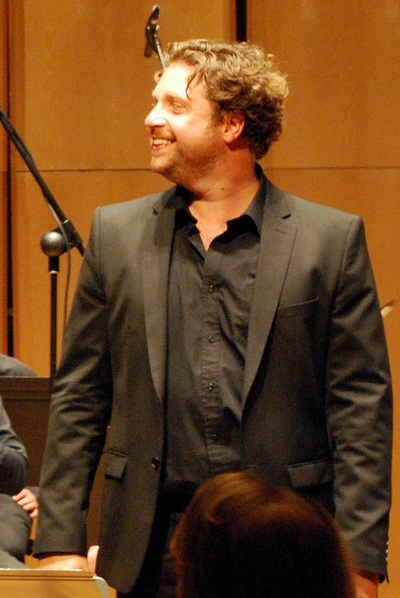
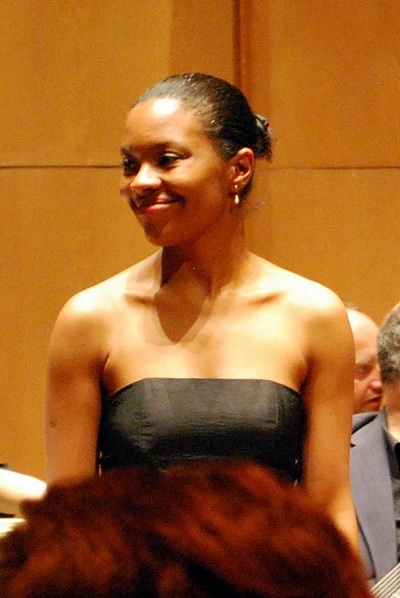
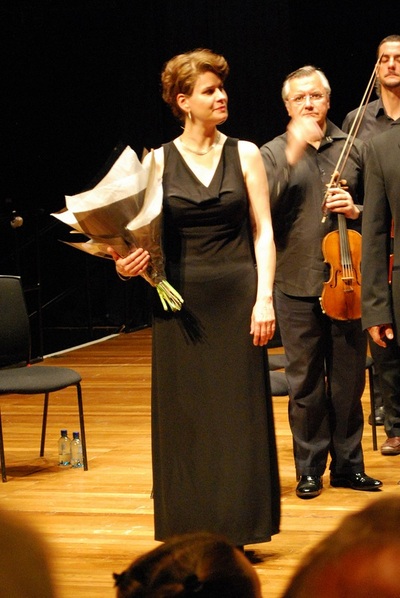
 RSS Feed
RSS Feed
